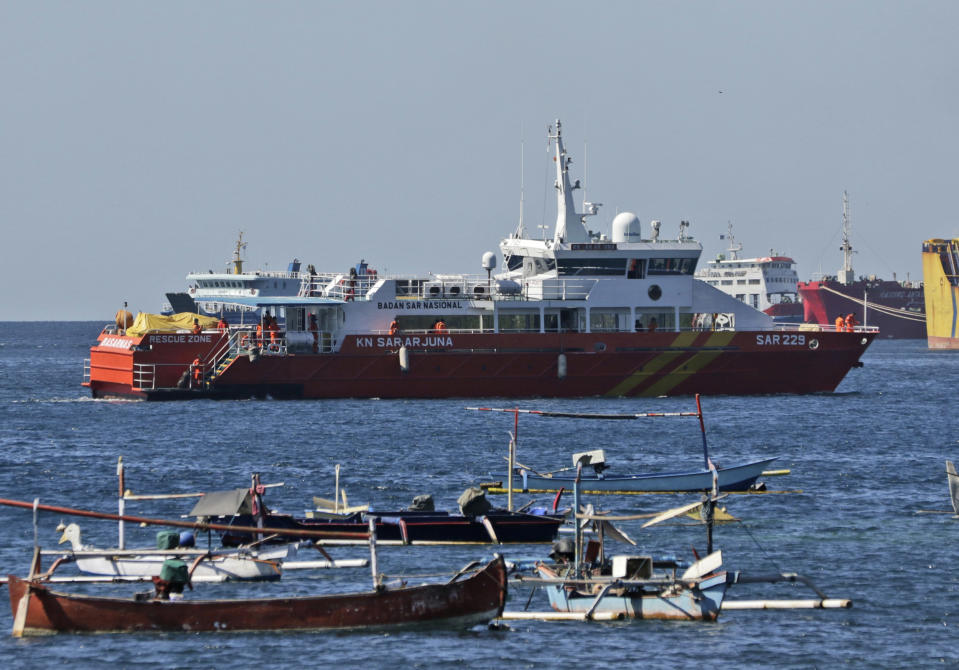Race against time to find missing submarine before crew runs out of air
With just hours to spare until the oxygen runs out aboard a missing submarine, Indonesia's navy on Friday dispatched two ships and several helicopters to scour the area where a strongly magnetic item was located underwater.
The United States was assisting in the increasingly desperate search for the vessel, which dropped off the radar Wednesday with 53 crew.
If the submarine is still intact, officials said, it will have enough oxygen to last until around just 3 p.m. ET Friday. That deadline passed with no news.
Download the NBC News app for breaking news and politics
The KRI Nanggala-402 went missing Wednesday morning after rehearsing for torpedo drills around 60 miles north of the island of Bali, Indonesia's navy said. It added that a helicopter later spotted an oil slick near the dive’s starting position.
On Thursday the navy's chief of staff, Yudo Margono, told a news conference that the diesel powered vessel had only enough air to last until early Saturday local time.
While the navy originally said it believed the 44-year old vessel had sunk to more than 2,000 feet and anything deeper than 1,640 feet could be fatal, hopes were raised late Thursday when the strongly magnetic item was discovered between 164 and 328 feet underwater.
Pentagon press secretary John Kirby said on Twitter on Thursday that the U.S. was "sending airborne assets to assist the search" at the invitation of the Indonesian government.
He added that Secretary of Defense Lloyd Austin would meet with his Indonesian counterpart, Prabowo Subianto, to discuss how else the U.S. could help.

Singapore, Malaysia, India and Australia have also sent ships or aircraft to help the search. They joined 24 Indonesian ships and a patrol plane that were mobilized for the search Friday, focusing on the area where the oil slick was found after the submarine disappeared.
The Nanggala was built in Germany and joined the Indonesian fleet in 1981. It underwent a refit in South Korea that was completed in 2012 and the vessel was said to be in good condition, according to Reuters.
Even if the submarine were to be located, rescuing the vessel and its crew will be challenging, Frank Owen, director of the Submarine Institute of Australia, told NBC News.
“We know that the submarine is old, we know that the submarine has a depth rating of 250 meters — which means that it probably could survive to 400-500 meters (1,300-1,600 feet) ," he said, adding that the vessel was in waters 700 meters (2,300 feet) deep.
Owen, who is not working on the rescue attempt, said that finding the submarine in one piece would only be possible if it had managed to remain suspended in the water.
“A submarine that loses propulsion means it can't actually drive itself back to the surface. And it might be too deep for putting air into the tanks to have any effect in terms of buoyancy. So it could be midwater and unable to use any electrical power,” he said.
“But the prognosis really isn’t good."

